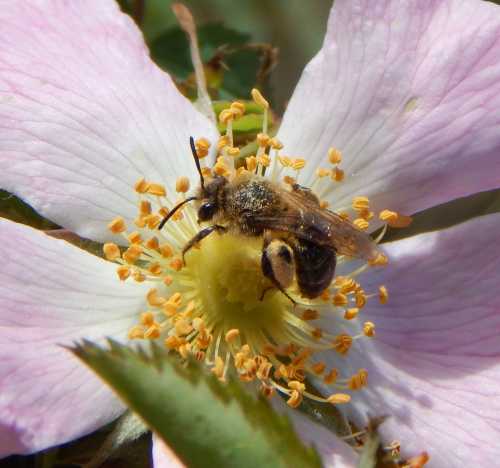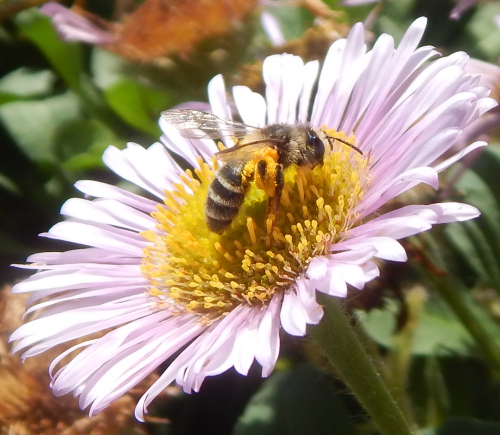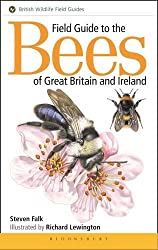The Heather Mining Bee, Andrena fuscipes
Given the name of this charming mining bee, the heather mining bee, Andrena fuscipes, it's hardly surprising that the preferred habitat of this bee species is the heather rich environments provided by ericaceous heathland and moorland.
In general, heather heaths provide prime habitat for a range of bee species. The sandy soil is ideal for bee burrows that can easily be dug, and the loose sand grains scooped away.
Heather heaths tend to accommodate other flora too, especially along the edges. Where coastline is also present, then as well as the wildflowers and heathers, a few trees and shrubs such as willows, gorse, bramble and hawthorns often add to the foraging resources for many species.
About The Heather Mining Bee - Andrena fuscipes
As a mining bee, Andrena fuscipes is a member of the Andrenidae bee family.
The females of this species have a golden-ginger / light brown thorax, and dark brown abdomen with clear pale bands. They measure approximately 7mm.
Males are about the same size, but slimmer and silver grey hair. Both have distinctive pale bands on the otherwise dark abdomen.
As a member of the Andrenidae family, these bees are short-tongued.
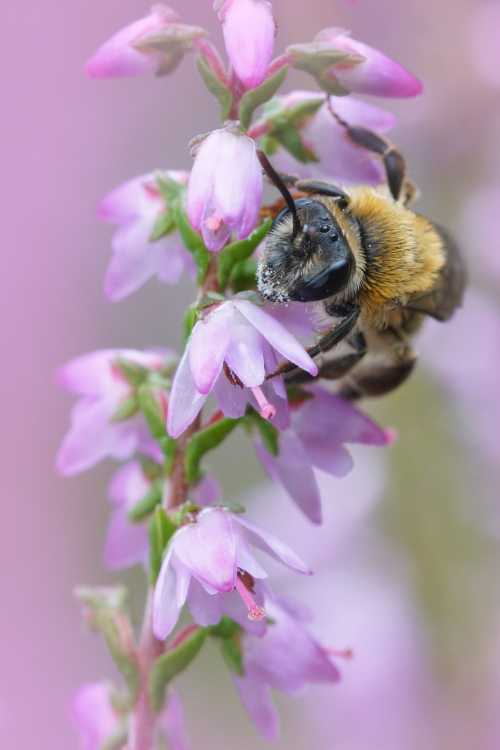 Female of the Heather mining bee, Andrena fuscipes
Female of the Heather mining bee, Andrena fuscipesForaging preferences
The heather mining bee, however, is narrowly oligoleptic (foraging on a very limited range of flowers). Heathers are a favourite source of nutrition upon which this species forage exclusively and especially common heather (or 'ling heather'), Calluna vulgari.
Hence the heather mining bee, Andrena fuscipes can be seen on the wing during the peak heather flowering season from July to September.
Nesting habits
These bees nest alone or in very loose aggregations, digging burrows in sandy ground.
Distribution/range
The map of Britain indicates confirmed records of the heather mining bee (from the National Biodiversity Network Atlas).
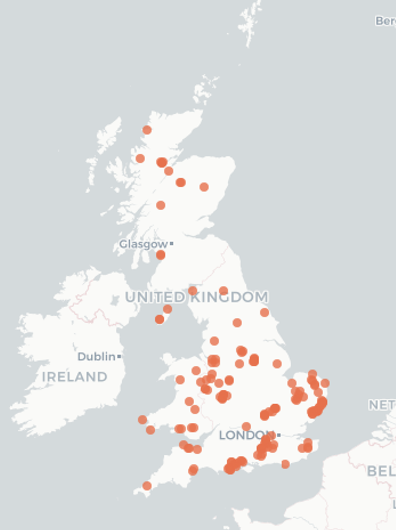
In Northern Ireland, Andrena fuscipes is a priority species, known to exist in just a single locality on the coast of Co. Down.
Predators and parasites
Look out for the nomad bee, Nomada rufipes, a key cleptoparasite which targets this species, and is also associated with heather heaths.
Siting of this nomad bee species in a heather heathland habitat could also indicate the presence of Andrena fuscipes.
If you found this page helpful or interesting, I'd really be grateful if you would share it with others - if not this page, perhaps another, such as Gardening For Bees.
Thank you so much :) .
